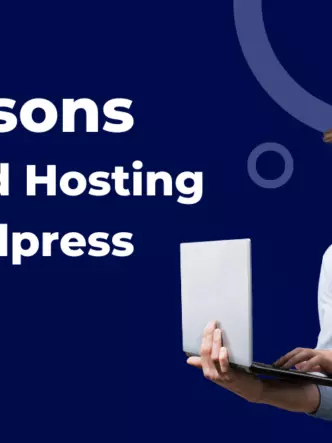Effective corporate communication, both internal and external, is essential for business success today.

Corporate communication’s role has expanded significantly due to ongoing technological and SaaS platform developments, directly impacting how organizations communicate and engage with employees, investors, partners, the public and the media.
Corporate communication covers many different areas, such as brand and reputation management, corporate governance, internal messaging, public relations, and crisis management.
The privacy of corporate communication is essential, especially when sensitive company information is shared internally.
Allowing it to fall into the wrong hands can cause considerable damage to an organization.
What is corporate communication?
Corporate communication refers to any messages a corporation issues to all stakeholders internally and externally.
What is internal corporate communication?
Internal corporate communication is about communication between managers, employees, executives, and board members within a company.
An example of internal communication would be a memo sent by management to all employees or a team chatting on Slack.
Internal communication can be formal or informal and may involve many or few employees. Finding the right method, frequency and tone for internal communication can affect long-term success.
What is external corporate communication?
External corporate communication is the face a company presents to the outside world.
An example is when media and public relations employees distribute press releases or organize news conferences.
Communication teams keep an eye out for any mentions of a company in the media and know how to respond to negative press coverage to avert any damage to the company reputation.
External corporate communication doesn’t always have to be formal – it may also involve interacting informally with consumers on social media.
Why is corporate communication important?

Running a successful business requires effective communication internally to build a strong company culture and externally to shape a company’s brand image.
The importance of corporate communication in an organization are as follows –
- Builds strong company culture
- Increases employee engagement
- Helps companies to develop a public voice
- Supports crisis management
- Shows a commitment to transparency
It builds a strong company culture: Effective internal corporate communication can create a growth-oriented environment. When internal teams collaborate effectively, it builds a strong company culture.
When internal communication is lacking, team members may miss out on important information and feel confused or left out. A healthy work environment offers countless benefits, such as increasing the ability to attract new talent and avoid high employee turnover.
Corporate communication teams have to make sure that internal communications, such as discussions about employee benefits, don’t become public knowledge.
A good team is adept at ensuring that the flow of information and internal discussions occur without any security issues. When internal communications such as Slack chats or memos are leaked to the public, this has a negative effect on company culture.
It increases employee engagement: Strong internal communication provides employees with a sense of purpose and offers constant feedback to help them grow and become more engaged.
Feedback and debating of issues and ideas usually lead to more effective collaboration.
It helps companies to develop a public voice: Effective external corporate communication helps a company to develop a public voice.
By maintaining a consistent brand image, it’s possible to promote more customer trust and loyalty.
It supports crisis management: Effective corporate communication supports crisis management. Internally, it ensures that everyone in the company is on the same page about a crisis situation, whereas externally, it conveys appropriate messages to the public.
It shows a commitment to transparency: Leadership that communicates thoughtfully and frequently with employees shows a commitment to transparency.
Employees are most engaged with their jobs when leadership is more transparent.
Digital Asset Management – How to secure your digital assets

Brands are increasingly dependent on digital assets.
Digital assets are intangible as they are within a digital only format. They include images, PDFs, videos, podcasts, apps, proprietary processes, customer databases, and any intellectual property protected by copyright, trademark or patent.
Most businesses use a combination of different communication methods, such as chat, email, social platforms, and videoconferencing. This diversity is important for communication but it can also make digital asset management difficult.
Brand managers may have digital assets spread across many different computers and digital devices over which they have little to no control. The truth is that securing digital assets is different from securing physical assets and many of the SaaS platform do not protect their digital assets, while those digital platform who do may not do it properly.
Digital Asset Management (DAM) is crucial to offer the level of control and security that’s essential when it comes to managing digital assets.
Here are some of its advantages of Digital Asset Management platform –
One location for all your digital assets: Digital asset management (DAM) solutions ensure that your digital assets are in one secure location over which you have complete control.
Multiple levels of security: It offers multiple levels of security and backups of digital assets.
Easy search for assets: DAAM reduces the time spent searching for information and increases productivity. The more time employees spend switching between tasks because they can’t find information, the less time they spend on focused work.
Digital assets are expensive and time-consuming to produce. Various ways to improve search for digital assets include using metadata with keywords and auto-tags to help employees find what they need.
Employees won’t have to spend time creating redundant copies of the same file. It is also easy to see how assets are being used and who is using them.
You can restrict access: When you have control over who has access to your digital assets, you can prevent them from being leaked. You can restrict access to them in various ways, such as by using passwords and white lists of IP addresses.
Once you have control over your digital asset library, you can use digital assets appropriately and make them available to any stakeholders who can help to amplify your corporate messages.
Why is it so important to have secure internal corporate communication channels?

Internal corporate communication is the key that helps to align employees behind corporate goals. Employees want to feel valued and that employers listen to their input.
Millennials expect more personalized communication from employers and want to know that they can hold top leaders accountable for their actions.
Use of digital technology
Establishing fast, reliable and interactive channels to reach all employees today means using digital technologies and combining these with new procedures and skills to create more trust and transparency within the workforce.
Growing popularity of video conferencing
With the growing popularity of remote work, video conferencing is a popular way to communicate with colleagues and team members.
It offers the perks of having visual impact and being able to read body language with the convenience of working from anywhere. Popular tools for video conferencing include Skype and Zoom.
Exposure to security risks
The very digital tools that your company uses to support internal corporate communication can also expose you to risks. Ensuring that your internal communication channels are secure is critical.
Hackers will always exploit security weaknesses in internal communication channels. Even the biggest and most successful companies in the world have experienced leaks and hacks that have allowed outsiders to get their hands on valuable information.
Just some of the information that shouldn’t get out includes banking information, confidential financial statements, customer information, social security numbers and information related to confidential projects.
Common security risks in internal communication
Some of the common security risks include employee negligence, theft, a lack of training, unsecured networks and using consumer-focused communication tools for business purposes.
Employee negligence: One of the biggest risks to the safety of internal communications is employee negligence.
Having advanced security measures can help to keep confidential data secure but it is also necessary for employees to have regular training about best security practices, like keeping operating systems and applications up to date.
Theft: Online thieves are interested in personal data and it’s not uncommon for them to target, steal, and sell it on the black market.
Large organizations are not the only targets for theft as smaller ones often make easier targets.
Unsecured networks: Now that employees are working remotely, this increases the necessity of securing internal communications.
For example, if an employee logs on using an open Wi-Fi network to send sensitive emails, the information is not secure.
Lack of training: It is very easy for hackers to exploit vulnerabilities such as improperly configured firewalls, not using proper patches in systems, and weak passwords.
Employees need to receive regular training about evolving technology challenges and how to adhere to security best practices.
Use of consumer-facing tools for corporate purposes: Tools like WhatsApp are built for communication but not for secure business-focused corporate communication. They are full of privacy issues.
A WhatsApp breach in mid-2019 resulted in many business owners and employees having malicious spyware installed on their smartphones.
Social media has the potential to swiftly put a brand in a reputational crisis as any news that gets out can quickly go viral.
What do you need to do to secure your internal communication channels? Firstly, you should have an internal communication policy that will help safeguard you against the risks.
It should clearly outline what’s acceptable and what isn’t when employees send and receive files and messages related to your company.
Build a private video platform for your corporate communication
Communications departments may be facing numerous challenges today but they can be resolved by building a private video platform for corporate communication.
How can video provide effective corporate communication?
- It allows for highly scalable and cost-effective communication as it can reach any number of internal and external stakeholders at once.
- It offers impactful, visually-driven information, which is more powerful than text.
- It provides an excellent tool for internal training and communication as it boosts viewer engagement and helps employees to retain information more than when using text.
- A live video session has an intimacy and authenticity to engage multiple viewers all at once wherever they are in the world.
- Video provides a quick way to disseminate direct, transparent messages to employees and customers, especially when there’s a crisis or confusion of some kind.
- It allows for collaboration and knowledge sharing that boosts engagement and productivity.
- Viewing can take place on any internet browser or digital device so it suits all needs and preferences.
- It can personalize and humanize communication with all stakeholders to establish and maintain trust.
- It brings ideas, models, and concepts to life with its powerful visual impact.
What does a private video platform have to offer?

Unified communication: A private video platform can help you to execute your corporate communication strategy by ensuring unified and consistent communication throughout your company.
Employees have a secure digital video platform for interacting, sharing media and collaborating.
Customization for a media player: With a highly customizable video player, it is easy to add your logo and brand colors which can influence user experience and create a more cohesive brand image.
Seamless integration: A private platform usually offers seamless integration with your existing business applications so you can use video in many different areas.
Teams don’t have to constantly upload or download files, switch apps, or email video files.
Transcoding capabilities: Transcoding converts all uploaded videos into various resolutions and formats to optimize them for best performance on all devices.
Multi-level security: Within a corporate environment, any security breaches can cause immense damage, which is why you may choose to use a more reliable, secure solution with layers of security.
You need to ensure that video content is only viewed by those authorized to see it. Having tiered security access options can greatly reduce security risks as it allows you to distinguish between different types of content and different roles.
Some ways to restrict access include password-protect, watermarks, domain lock and using SSO (single sign-on).
You can create a secure corporate network for your digital assets on your enterprise servers and only provide access within your organization by using IP restrictions.
Advanced video analytics: Video analytics indicate how well corporate videos are performing.
Do viewers pause and rewind? Do they watch to the end of the video or drop off? Video analytics like this can help teams to make improvements.
A Content Delivery Network (CDN) can help to reduce load times when dealing with large video files. It places cached versions of video files on globally distributed servers.
End-users get the version from the server closest to them so they get the highest quality delivery without any buffering or freezing.
Using a CDN means many viewers can watch video content concurrently without difficulty and content remains secure.
An adaptive bitrate video player ensures that viewers have a good streaming experience even when there’s a poor network connection. The system can increase or decrease quality depending on the strength of the signal.
Subtitles and captions can make videos more accessible to people of other languages and the disabled.
People who work remotely may also prefer to turn on subtitles at ties while listening to videos.
Create a corporate video channel for your enterprise
For corporate video hosting, you need a video channel where you can group all the corporate videos you make and upload. It’s important to have a sustainable and secure way to store, organize, manage, and search for all corporate videos.
If you create a YouTube channel for your corporate communication, you will experience restrictions on branding, monetization, and more.
The video solution you choose must be able to grow with you whether your audiences increase in size or your business keeps uploading more corporate videos.
Your live streaming solutions should perform even under high pressure and you will need granular analytics that can drive improvements.
Application Programming Interface (API) support is important if you want to integrate a cloud video platform with your other business applications.
This means people who visit your website to watch a video can take action without needing to leave the website. By customizing a video platform with APIs, it offers greater control over the customer experience.
Why do you need to utilize a video enterprise solution on top of your DAM?

Digital asset management solutions were developed to handle all digital assets, including video. Many of them have evolved to handle video files better today but more traditional DAMs are too limited for teams that work on a daily basis with large video files in many different formats.
Managing video content requires significantly more storage, computing power and resources than documents and images.
An enterprise video solution provides a way to manage the many video files that businesses use today for both internal and external corporate communication.
A video enterprise solution gives you full control over your digital assets and offers superior speed, quality, security, more granular analytics and consistency. It is possible for you to monetize a vast library of video content while ensuring that your digital assets are completely secure.
Conclusion
Digital Asset Management (DAM) is essential to corporate communication today, offering a way to store, organize, track and share digital assets from a secure, central location.
For the kind of privacy corporate communication requires today, the choice of a video hosting platform should enable many different types of use cases for both internal and external communication but also offer security and customization features that keep videos secure and safe.









